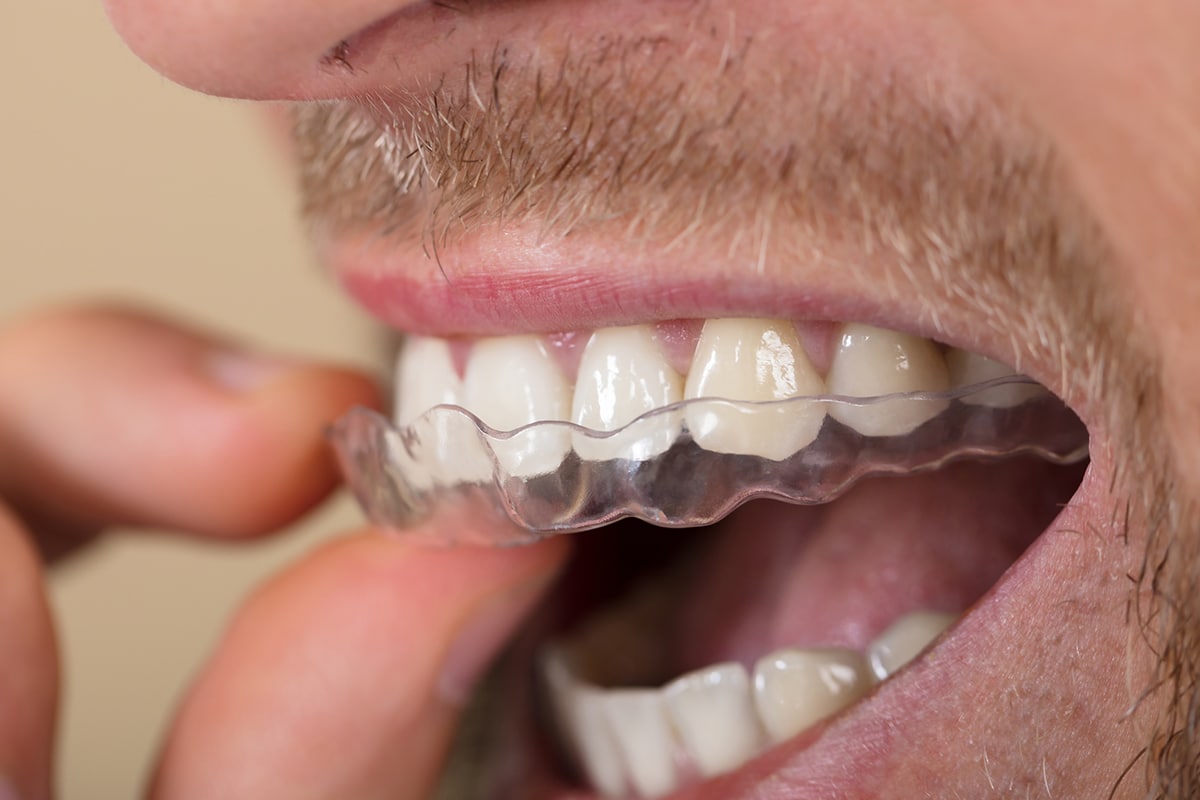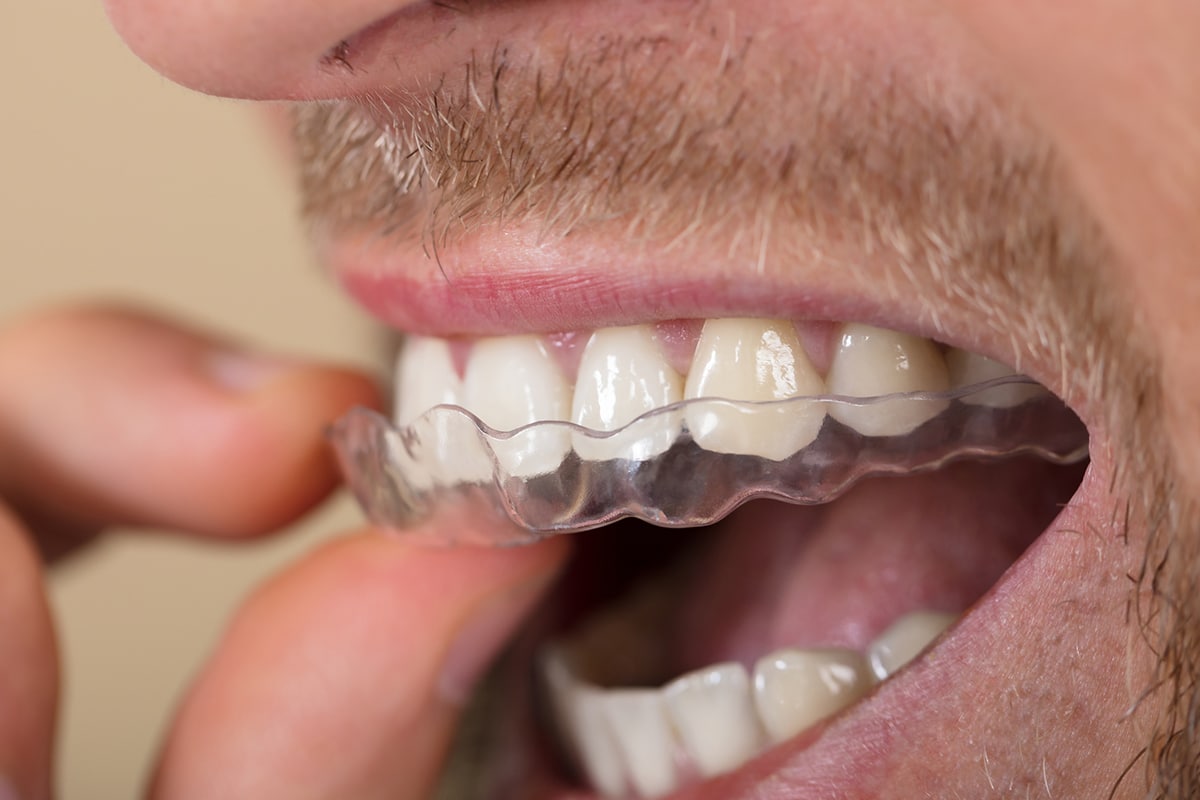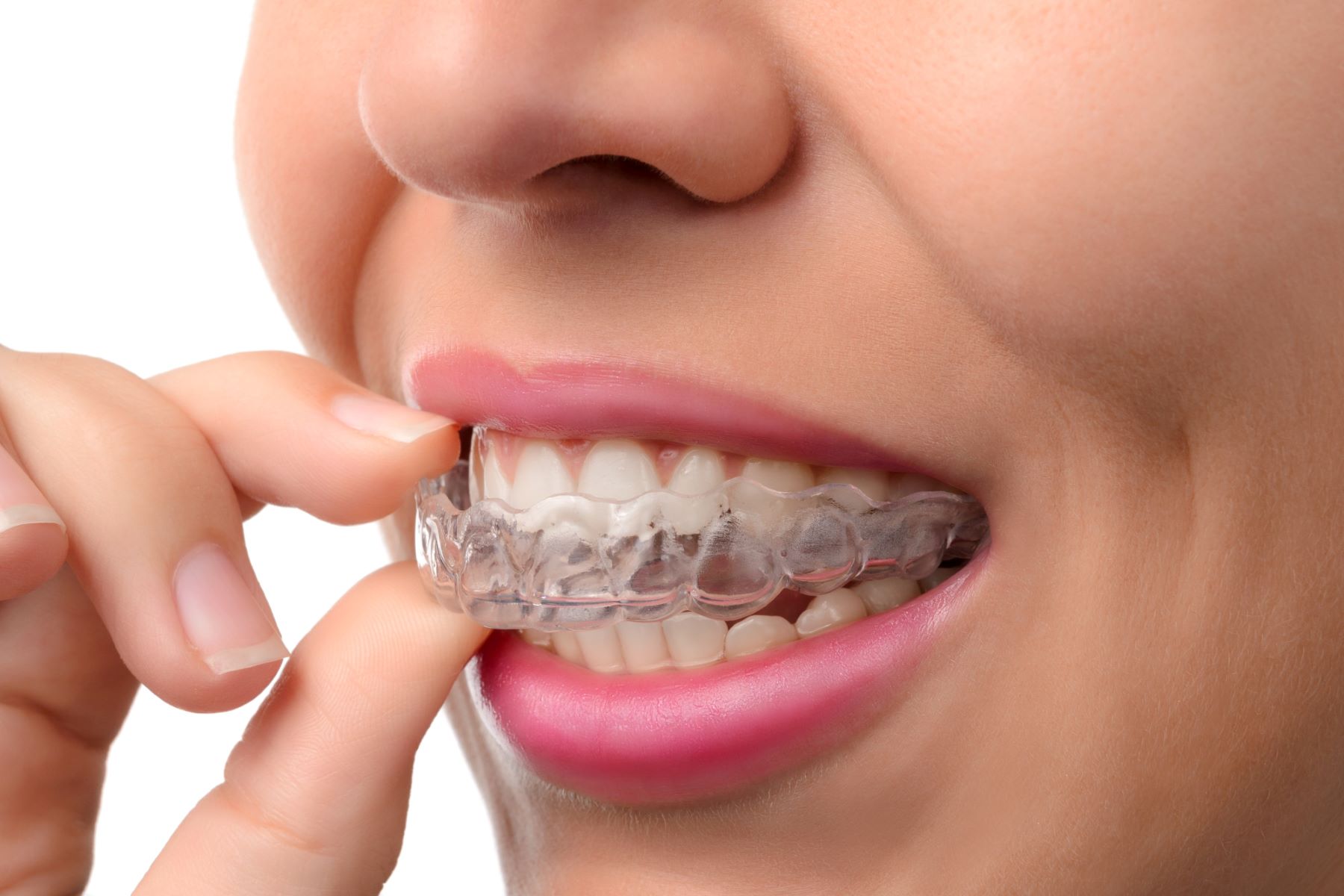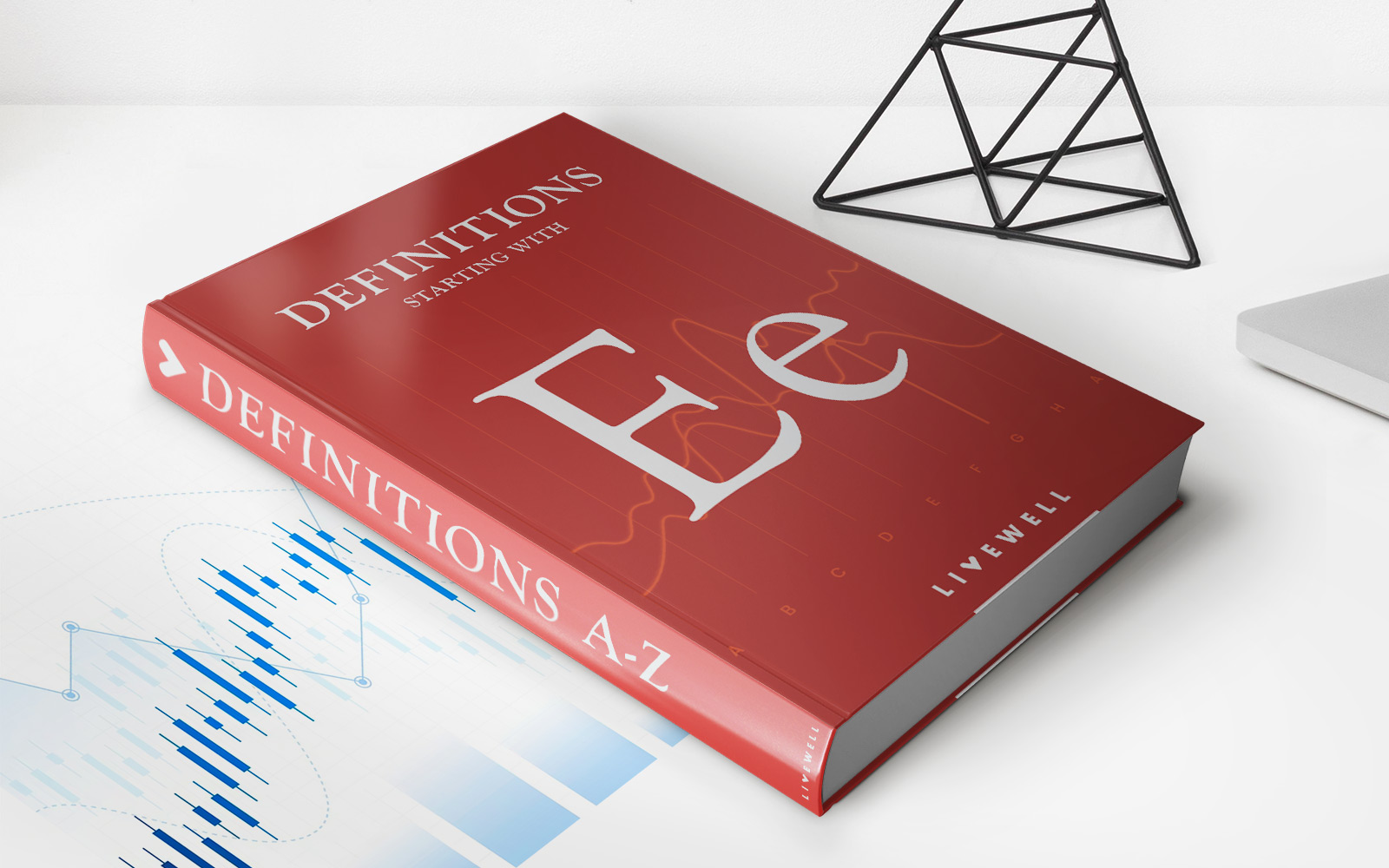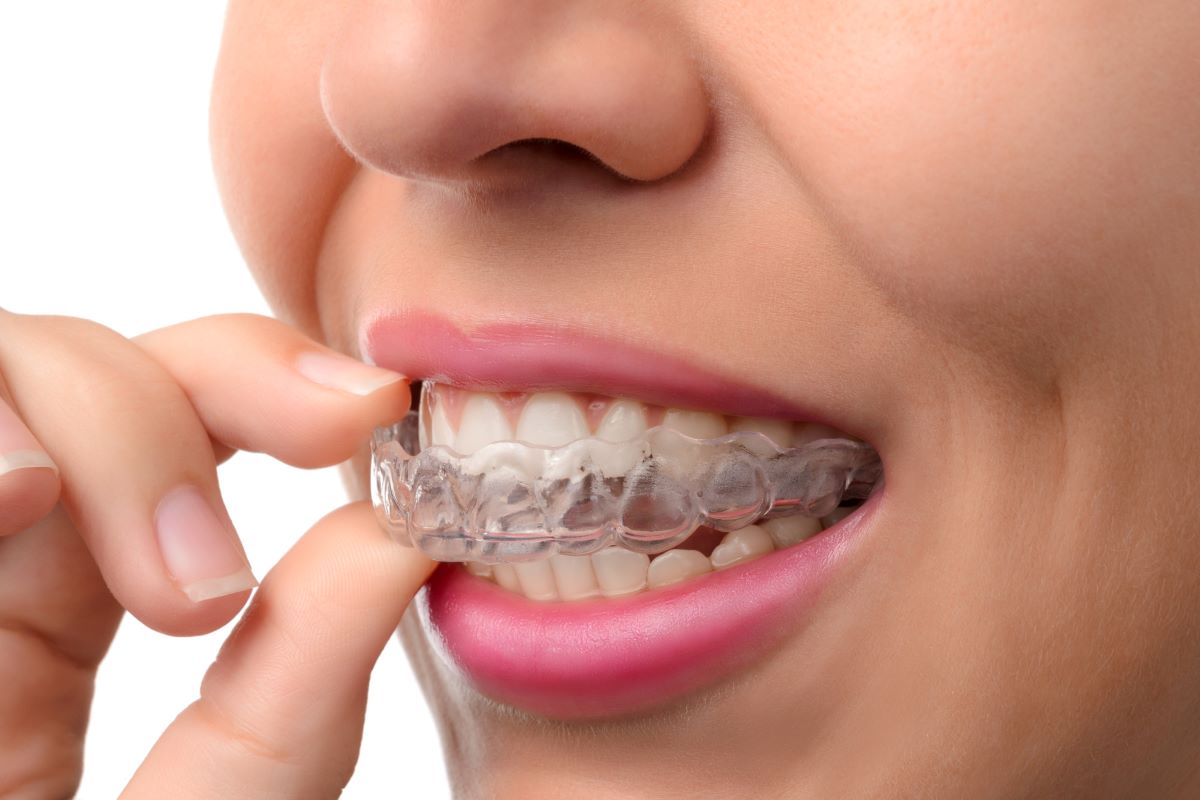

Finance
Which Insurance Covers Invisalign?
Modified: February 21, 2024
Looking for insurance coverage for your Invisalign treatment? Find out which insurance plans offer financial assistance for Invisalign expenses.
(Many of the links in this article redirect to a specific reviewed product. Your purchase of these products through affiliate links helps to generate commission for LiveWell, at no extra cost. Learn more)
Table of Contents
Introduction
Invisalign has revolutionized the field of orthodontics by offering a discreet and convenient alternative to traditional braces. This innovative treatment uses clear, removable aligners to gradually straighten teeth, making it particularly popular among adults and teenagers.
However, like any orthodontic treatment, the cost of Invisalign can be a significant investment. That’s where insurance comes in, providing financial coverage to help offset the expenses associated with this treatment. In this article, we will explore the ins and outs of insurance coverage for Invisalign, helping you understand which insurance plans can help make your dream of a straighter smile a reality.
Before diving into the world of insurance, let’s briefly touch on what Invisalign is and why it has become so popular. Invisalign is a clear aligner system that gently moves teeth into their desired positions. It offers several advantages over traditional braces, such as improved aesthetics, removability, and increased comfort. Invisalign aligners are virtually invisible, allowing patients to straighten their teeth without drawing attention. Additionally, the aligners can be removed while eating, drinking, and brushing, making it easier to maintain oral hygiene compared to traditional braces.
Now that we understand the appeal of Invisalign, let’s discuss the importance of having orthodontic insurance. Orthodontic treatments can be a significant financial investment, and many insurance plans offer coverage specifically for orthodontic procedures like Invisalign. Having insurance coverage not only provides financial assistance but also gives you peace of mind knowing that a portion of the costs will be covered.
Understanding Invisalign
Invisalign is an innovative orthodontic treatment that uses a series of clear, custom-made aligners to gradually straighten teeth. Unlike traditional braces that use metal brackets and wires, Invisalign aligners are made of a smooth, transparent plastic material. This makes them virtually invisible when worn, allowing patients to straighten their teeth discreetly.
The treatment process begins with a consultation with an orthodontist who will evaluate your teeth and discuss your treatment goals. If Invisalign is deemed suitable for your specific case, digital impressions or physical molds of your teeth will be taken. These impressions are then used to create a series of custom aligners that are designed to move your teeth into the desired positions over time.
Each set of aligners is typically worn for about two weeks before progressing to the next set. As you advance through the series of aligners, your teeth gradually and gently shift into alignment. During the treatment process, you will have regular check-ups with your orthodontist to monitor your progress and ensure that the aligners are working effectively.
One of the key advantages of Invisalign is its convenience. Since the aligners are removable, you have the flexibility to take them out when eating, drinking, brushing, or flossing. This means you can still enjoy your favorite foods without worrying about damaging traditional braces. It also makes oral hygiene maintenance easier, reducing the risk of tooth decay or gum problems commonly associated with fixed braces.
Invisalign is suitable for a wide range of orthodontic issues, including crowded teeth, gaps, overbites, underbites, crossbites, and open bites. However, it’s important to note that not all cases can be treated with Invisalign, and some complex orthodontic issues may require alternative treatment options.
The duration of Invisalign treatment varies depending on the individual case, but most treatments take around 12 to 18 months to achieve the desired results. Regular wear of the aligners, typically 20 to 22 hours per day, is essential for successful treatment outcomes.
Now that we have a clear understanding of Invisalign and how it works, let’s explore the importance of having dental insurance coverage specifically for orthodontic treatments like Invisalign.
Importance of Orthodontic Insurance
Orthodontic treatments, including Invisalign, can be a significant financial investment. The cost of orthodontic procedures varies depending on various factors such as the complexity of the case, the duration of treatment, and the location of the orthodontist’s practice. Without proper insurance coverage, the cost of Invisalign can be a burden for many individuals and families.
Orthodontic insurance plays a crucial role in helping to make these treatments more accessible and affordable. By having a dental insurance plan that includes orthodontic coverage, you can significantly reduce the out-of-pocket expenses associated with Invisalign treatment.
Having insurance coverage for Invisalign provides several benefits. Firstly, it helps to alleviate the financial strain of paying for the treatment upfront. Insurance plans typically cover a percentage of the overall cost, which can greatly reduce the amount you have to pay out of pocket.
Secondly, orthodontic insurance ensures that you have a predictable payment plan. Rather than being hit with a large lump sum, insurance spreads the cost over the course of the treatment period, making it more manageable and budget-friendly.
Moreover, orthodontic insurance coverage offers peace of mind. Knowing that a portion of your orthodontic expenses is covered can relieve the stress and worry associated with the financial aspects of treatment. You can focus on the journey to a straighter smile without the added burden of excessive costs.
It’s important to note that orthodontic insurance coverage varies depending on the insurance plan and provider. Some plans have waiting periods or exclusions for pre-existing conditions, so it’s essential to carefully review the terms and conditions of your dental insurance policy to understand the coverage details.
While dental insurance is not a guarantee of full coverage for Invisalign, having it as part of your insurance policy can significantly reduce the overall expense. It is important to consider insurance options when considering orthodontic treatment, as it can make a significant difference in the affordability of Invisalign.
Now that we understand the importance of orthodontic insurance coverage, let’s delve into the different types of dental insurance and explore which ones provide coverage for Invisalign.
Types of Dental Insurance Coverage
When it comes to dental insurance coverage for orthodontic treatments like Invisalign, it’s important to understand the different types of plans available. Dental insurance plans generally fall into two main categories: employer-sponsored plans and individual plans.
Employer-Sponsored Plans: Many employers offer dental insurance as part of their employee benefits package. These plans often provide coverage for a range of dental services, including orthodontic treatments like Invisalign. The coverage and terms may vary depending on the specific plan offered by the employer, so it’s crucial to review the policy details to determine the extent of orthodontic coverage.
Individual Plans: Individual dental insurance plans are purchased directly by individuals or families. These plans typically offer a variety of coverage options, including orthodontic coverage. It’s important to carefully review the terms and conditions of individual plans to understand the coverage limits, waiting periods, and any exclusions specific to orthodontic treatments.
Within these two broad categories, dental insurance plans may have different levels of coverage for orthodontic treatments. Some plans offer comprehensive coverage, covering a significant portion of the cost of orthodontic treatments like Invisalign. Other plans may have limited coverage with lower annual maximums or higher copayments.
It’s also worth noting that dental insurance plans typically have a waiting period before orthodontic coverage becomes effective. This means that you may need to wait a certain period of time, often several months, before you can begin using your orthodontic benefits. Be sure to check the waiting period specified in your dental insurance policy.
Furthermore, some dental insurance plans may have exclusions for pre-existing conditions. If you already have misaligned teeth or other orthodontic issues prior to getting the insurance coverage, the plan may not cover the treatment for those specific conditions.
It’s important to thoroughly research and compare dental insurance plans to find one that best suits your needs, including coverage for orthodontic treatments like Invisalign. Consider factors such as the overall cost, coverage limits, waiting periods, and any exclusions before making a decision.
Now that we have explored the different types of dental insurance coverage, let’s take a closer look at some insurance providers that offer coverage for Invisalign.
Insurance Providers that Cover Invisalign
There are several insurance providers that offer coverage for Invisalign and other orthodontic treatments. While coverage options may vary depending on the specific plan and policy, here are some well-known insurance providers that commonly offer coverage for Invisalign:
- Delta Dental: Delta Dental is one of the largest dental insurance providers and offers coverage for orthodontic treatments, including Invisalign. They have various plans available, so it’s important to check the specific plan details to understand the extent of coverage for Invisalign.
- Cigna Dental Insurance: Cigna Dental Insurance also offers coverage for orthodontic treatments, including Invisalign. They have a wide network of dentists and orthodontists, making it convenient to find an Invisalign provider within their network.
- MetLife: MetLife provides dental insurance coverage that includes orthodontic benefits. They offer different plans with varying levels of coverage for orthodontic treatments like Invisalign.
- UnitedHealthcare Dental: UnitedHealthcare Dental is another insurance provider that offers coverage for orthodontics, including Invisalign. They have a range of dental plans available, some of which include orthodontic benefits.
- Anthem Blue Cross Blue Shield: Anthem Blue Cross Blue Shield is a well-known provider of health and dental insurance. They offer dental insurance plans that may cover Invisalign, but coverage may vary depending on the specific plan and policy.
These are just a few examples of insurance providers that commonly offer coverage for Invisalign. However, it’s important to note that coverage options, network providers, and plan details may vary depending on your location and the specific insurance policy.
Prior to selecting an insurance provider, it’s recommended to research and compare the different plans available in your area. Look into the coverage limits, waiting periods, exclusions, and any additional requirements for orthodontic treatments like Invisalign. It’s also advisable to consult with the insurance provider directly or speak with an insurance broker for more personalized guidance in choosing the best insurance plan for your needs.
Understanding which insurance providers offer coverage for Invisalign is an important step in making the treatment more affordable. However, it’s equally important to be aware of the coverage limitations and factors to consider when selecting insurance for Invisalign, which we will discuss in the next section.
Understanding Coverage Limitations
While dental insurance plans may offer coverage for Invisalign and other orthodontic treatments, it’s essential to understand the limitations and factors that may impact your coverage. Insurance coverage for Invisalign is subject to certain conditions and restrictions, which may vary depending on the insurance provider and specific plan. Here are some common coverage limitations and factors to consider:
- Percentage of Coverage: Insurance plans typically cover a percentage of the total cost of Invisalign. For example, the plan might cover 50% of the treatment cost, leaving you responsible for the remaining 50%. It’s important to check the coverage percentage specified in your insurance policy to understand how much you will need to pay out of pocket.
- Lifetime Maximum: Dental insurance plans often have a lifetime maximum benefit for orthodontic treatments, including Invisalign. This means that the insurance provider will cover up to a certain dollar amount for orthodontic procedures throughout your lifetime. Once you reach the maximum benefit amount, you would be responsible for any additional expenses.
- Waiting Periods: Some dental insurance plans have waiting periods before orthodontic coverage becomes effective. This means that you may need to wait for a certain period of time, typically several months, before you can start using your orthodontic benefits. Be sure to review the waiting period specified in your insurance policy.
- Pre-Authorization: In many cases, insurance providers require pre-authorization for orthodontic treatments like Invisalign. This means that you need to submit a treatment plan to the insurance company for approval before starting the treatment. It’s important to follow the pre-authorization process outlined by your insurance provider to ensure that you meet the necessary requirements for coverage.
- Out-of-Network Providers: Some insurance plans have a network of preferred providers, and coverage may vary if you choose to see an out-of-network orthodontist. It’s advisable to check whether your preferred orthodontist is in-network with your insurance provider to maximize your coverage.
- Age Limitations: Dental insurance plans may have age limitations for orthodontic coverage. While coverage for orthodontic treatments is typically available for children and teenagers, it may be limited or not covered for adults. Check the age restrictions specified in your insurance policy to determine if you are eligible for coverage.
Understanding these coverage limitations and factors is crucial when considering insurance for Invisalign. It’s important to thoroughly review the terms and conditions of your dental insurance policy to avoid any surprises and ensure that you make an informed decision.
Now that we have explored the coverage limitations, it’s time to discuss the factors you should consider when choosing insurance for Invisalign.
Factors to Consider When Choosing Insurance for Invisalign
When selecting insurance coverage for Invisalign, it’s essential to consider various factors to ensure that the chosen plan suits your needs and provides adequate coverage. Here are some key factors to consider:
- Orthodontic Coverage: Determine whether the insurance plan specifically covers orthodontic treatments, including Invisalign. Some dental insurance plans may not include orthodontic coverage or may offer limited coverage, so it’s important to verify the extent of orthodontic benefits.
- Network Providers: Check if the insurance plan has a network of orthodontists that offer Invisalign treatment. Choosing an in-network provider can help maximize your coverage and reduce out-of-pocket expenses. If you have a specific orthodontist in mind, ensure they are part of the insurance plan’s network.
- Coverage Percentage: Review the coverage percentage specified in the insurance policy. Ideally, higher coverage percentages will reduce your out-of-pocket expenses. Pay attention to the percentage of coverage for orthodontic treatments like Invisalign.
- Waiting Periods: Determine if the insurance plan has waiting periods before orthodontic coverage becomes effective. If you require immediate treatment, look for a plan with shorter waiting periods or options that waive the waiting period for orthodontic treatments.
- Maximum Benefit Limit: Understand the maximum benefit limit for orthodontic treatments. This limit indicates the maximum amount the insurance provider will pay towards Invisalign. If the treatment cost exceeds the maximum benefit, you will be responsible for the remaining expenses.
- Deductibles and Copayments: Consider the deductibles and copayments associated with the insurance plan. Deductibles are the amount you must pay before the insurance coverage kicks in, while copayments are the fixed fees you are responsible for at each visit. Evaluate how these factors will affect the overall affordability of Invisalign treatment.
- Flexibility: Assess the flexibility of the insurance plan when it comes to choosing an orthodontist or making changes to your treatment plan. Ensure that the plan provides the freedom to select a qualified orthodontist and allows adjustments to your treatment if necessary.
- Additional Benefits: Look for any additional dental benefits offered by the insurance plan. Some plans may include coverage for preventive care, such as cleanings and exams, which can further contribute to your oral health.
- Costs vs. Coverage: Evaluate the overall costs of the insurance plan, including monthly premiums, deductibles, copayments, and any out-of-pocket expenses. Compare these costs with the coverage provided to determine the value and affordability of the plan for Invisalign treatment.
Considering these factors will help you make an informed decision and select an insurance plan that provides suitable coverage for Invisalign. It’s crucial to carefully review the policy terms and consult with insurance representatives or brokers if you have any questions or need clarification.
Now that we have explored the factors to consider when choosing insurance coverage for Invisalign, let’s conclude our discussion.
Conclusion
Invisalign is a popular orthodontic treatment option for achieving a straighter smile, offering a discreet and convenient alternative to traditional braces. However, the cost of Invisalign can be a significant investment. That’s where orthodontic insurance comes in, providing financial coverage to help offset the expenses associated with this treatment.
Understanding the importance of orthodontic insurance coverage and the types of dental insurance available is crucial. Employer-sponsored plans and individual plans both offer coverage for orthodontic treatments like Invisalign, although the specific coverage and limitations may vary. It’s essential to review the policy details, including coverage percentages, waiting periods, and lifetime maximums, to determine the extent of coverage provided.
Insurance providers such as Delta Dental, Cigna Dental Insurance, MetLife, UnitedHealthcare Dental, and Anthem Blue Cross Blue Shield commonly offer coverage for Invisalign. However, it’s important to verify network providers, coverage limitations, and any pre-authorization requirements specific to orthodontic treatments.
Factors to consider when choosing insurance for Invisalign include orthodontic coverage, network providers, coverage percentages, waiting periods, maximum benefit limits, deductibles and copayments, flexibility, and additional benefits. Evaluating these factors will help you select an insurance plan that suits your needs and provides adequate coverage for Invisalign.
While insurance can significantly reduce the costs associated with Invisalign, it’s important to note that not all expenses may be covered. Understanding the coverage limitations, exclusions, and potential out-of-pocket expenses is crucial. Review your insurance policy carefully, consult with insurance representatives or brokers if needed, and ask questions to ensure you fully understand the terms and conditions of the coverage.
Choosing the right insurance coverage for Invisalign can make a significant difference in the affordability of the treatment. By considering the factors mentioned and conducting thorough research, you can find an insurance plan that helps you achieve the straighter smile you desire while minimizing the financial burden.
Remember to consult with your orthodontist and insurance provider to ensure that you have a clear understanding of the coverage options and requirements specific to your individual case. With the right insurance coverage, you can embark on your Invisalign journey with confidence, knowing that you have financial support along the way.
